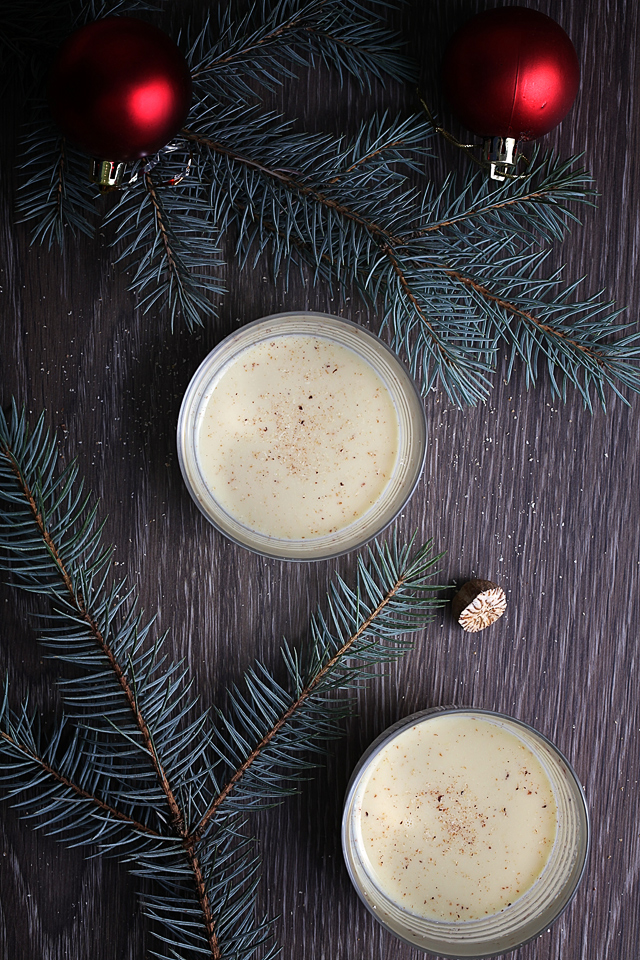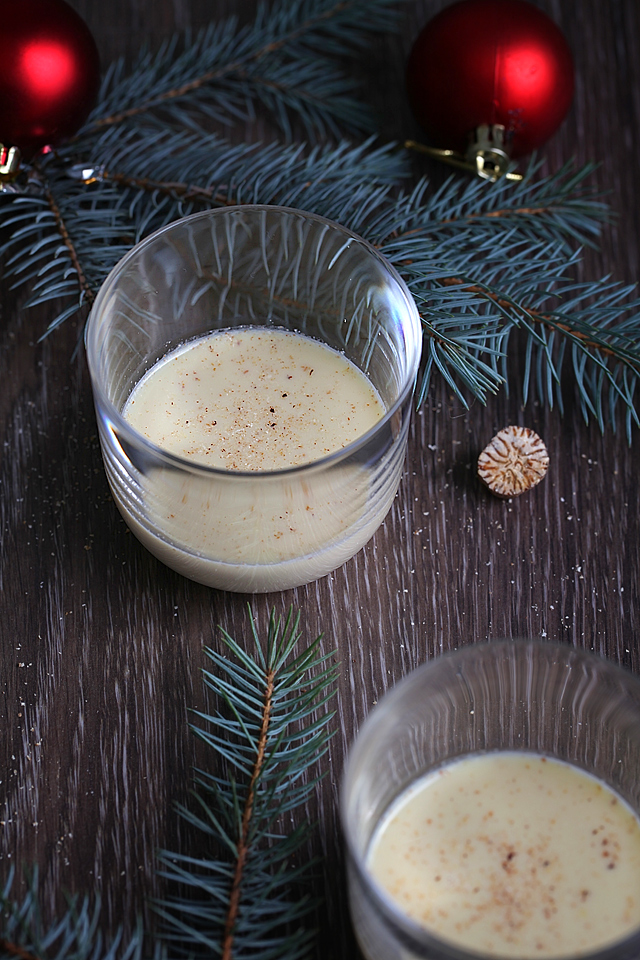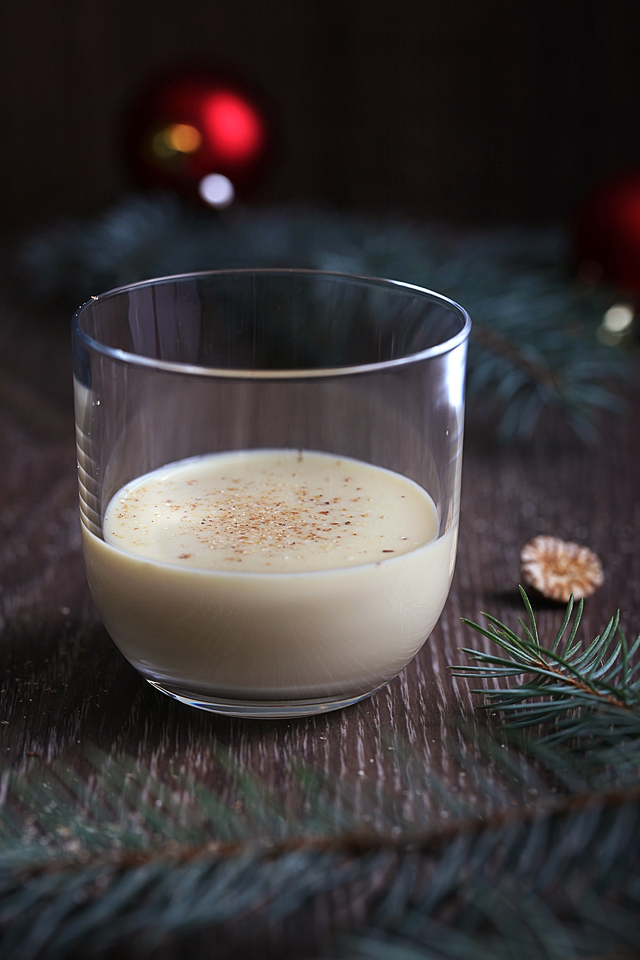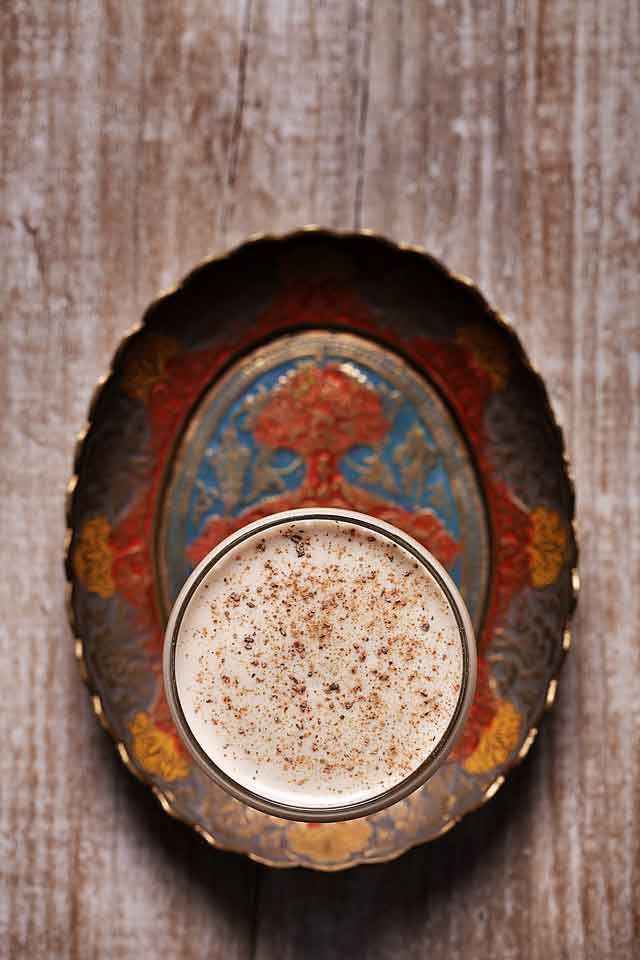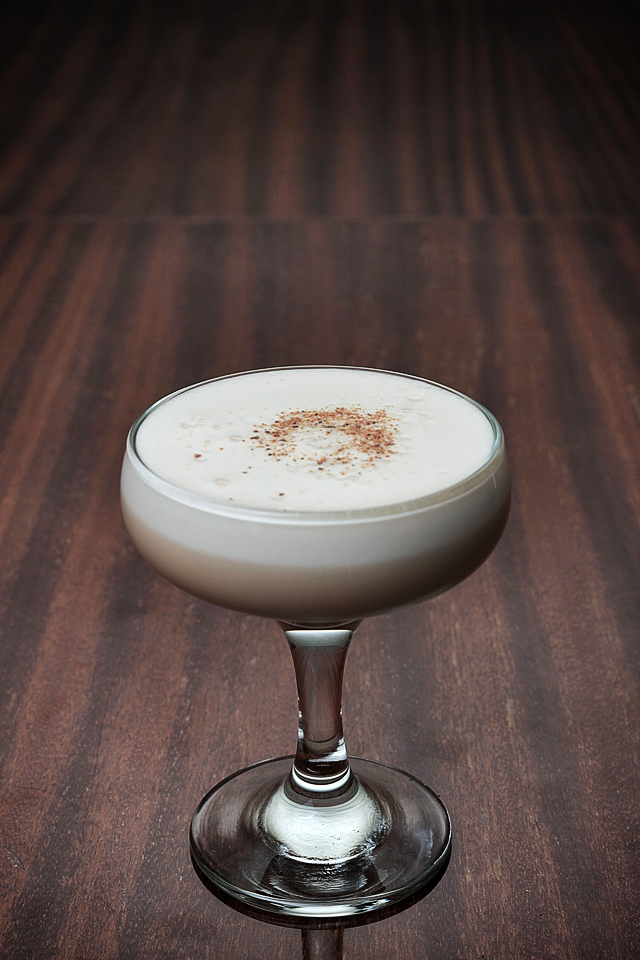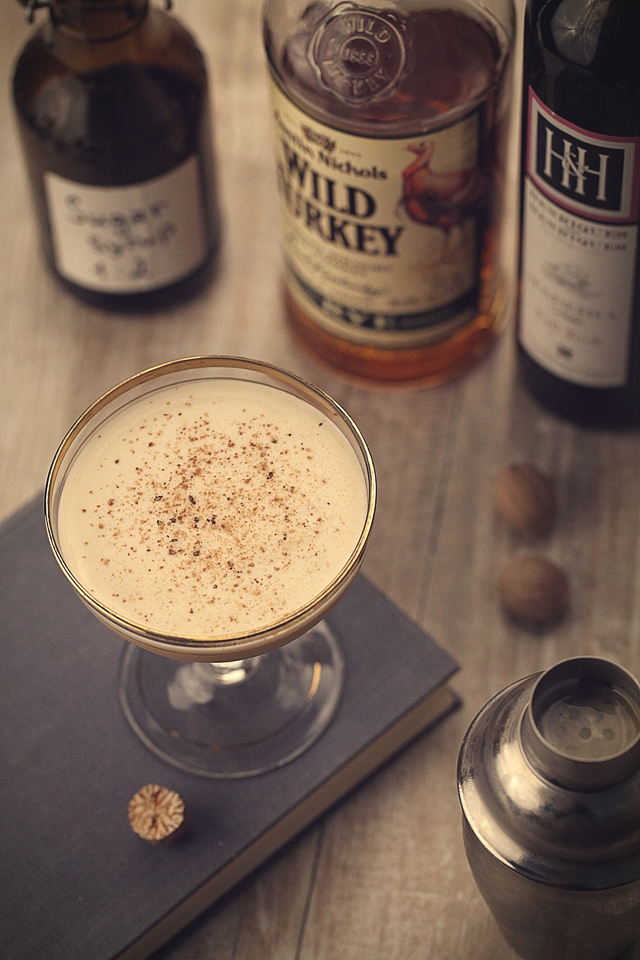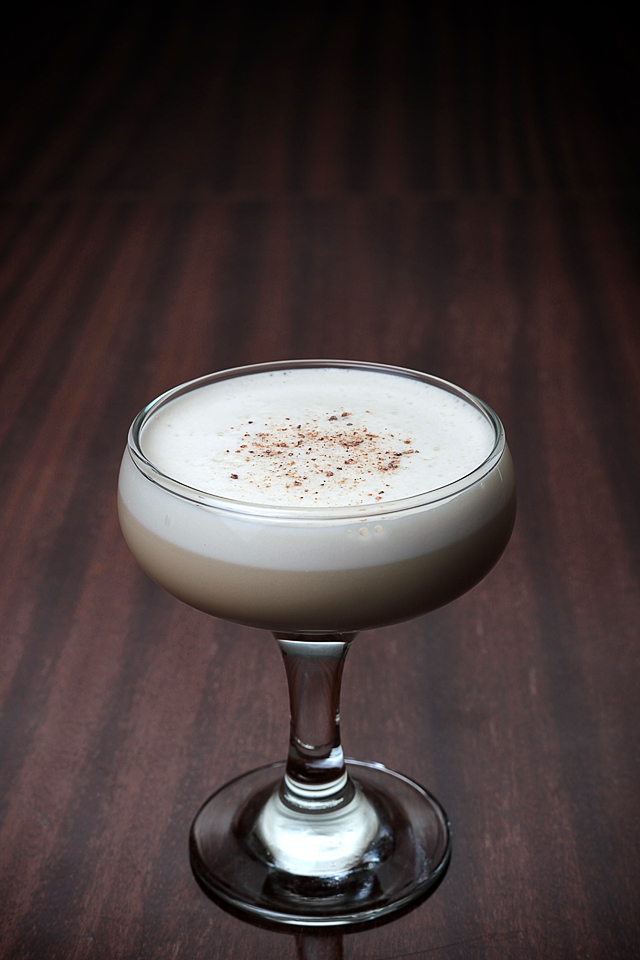Some days ago I posted about my first sips of a traditional American Christmas drink – Eggnog. In that entry I briefly mentioned that there were two ways to achieve proper texture of eggnog (you should realize, that these two ways give entirely different results). First – maturing – I tried with my first recipe of Uncle Angelo’s Eggnog by Dale DeGroffe (who, actually, as you can see in this video, mixes his famous Uncle Angelo’s Eggnogs in quite original way and without any ripening) and second – cooking I am going to describe here.
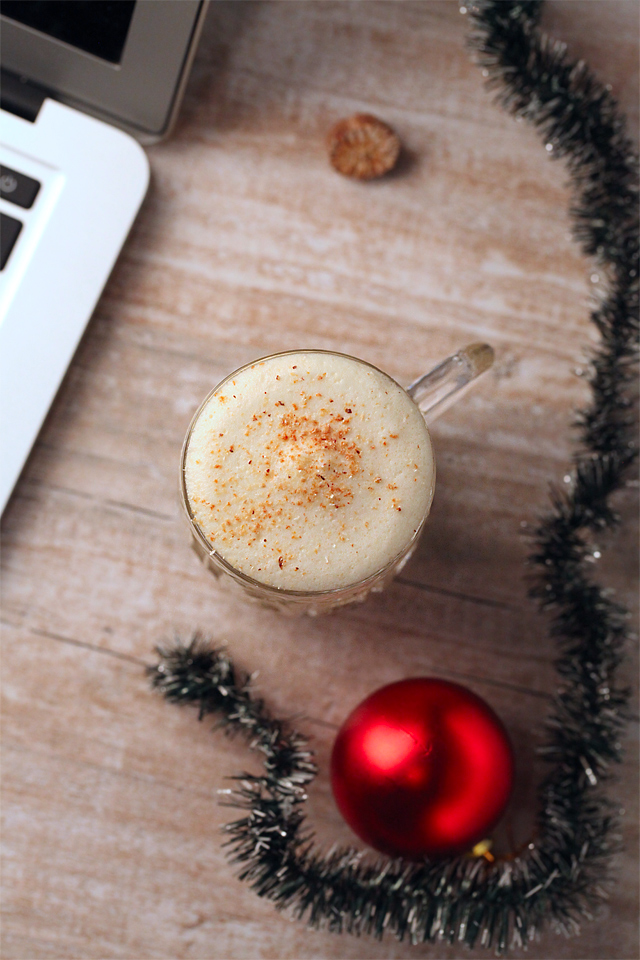
In a way, it is a philosophical issue – To cook or not to cook [eggnogs]: that is the question! And I see at least two reasons that make people cook their nogs. First – a lot of people are afraid of consuming raw eggs, they are frightened by salmonella, stomach bug and other indigestions. But another reason seems the most important – cooked eggnog is absolutely delicious! Besides, cooking of eggnog allows achieving of a really thick, rich and textural eggnog.
Cooked eggnog consists of the same ingredients as, let’s say, a plain one. Eggs, milk, cream, spices and bourbon, but its preparation is an absolutely culinary journey. I.e. you really need to cook it :) And this may frighten many that are much stronger than mythical salmonella :) What is it you say? You gonna put poached eggs in my nog, are you nuts, bro? 8)
Really, no, there won’t be any poached eggs in your eggnog, bro, if you are attentive enough and cook your eggnog in the right way 8)
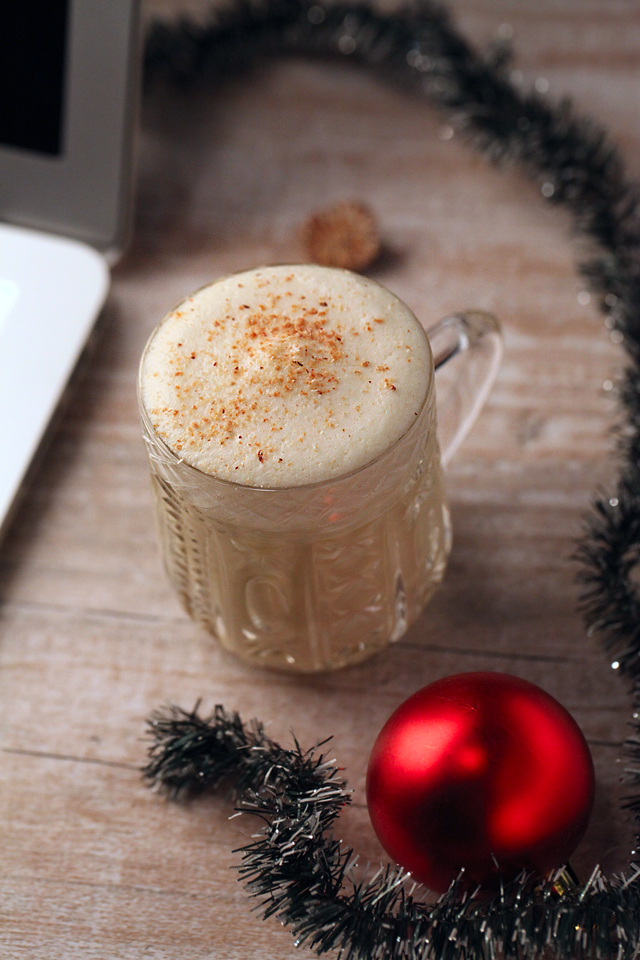
Classic Cooked Egg Nog (Классический заварной Эгг Ног)
2 big chicken eggs
75 g sugar
250 ml milk
75 ml cream
a pinch of salt
grated nutmeg (to taste)
grated cinnamon (to taste)
some cloves (to taste, optional)
vanilla extract (to taste)
80 ml bourbon
Directions:
1. In an appropriate sized saucepan pour milk, cream (if you use half and half), add pinch of salt, fresh grounded nutmeg, cinnamon, some whole cloves or another spices and heat the mix till it is steaming (but do not boil! As we all know, boiled milk isn’t that tasty :) Leave warm milk mixture to steep. Before using I prefer to strain the mix through a tea strainer.
2. Separate eggs. Put egg whites in an appropriate airtight container and refrigerate or (if you are going to keep your eggnog relatively long) freeze.
3. Beat yolks in a large bowl until pale than add about three-fourth of the sugar and beat until they become almost white.
4. Pour warm spicy mixture to beaten yolks very slowly. Stir up constantly while you are pouring the milk.
5. Set the mixture on medium (or low) heat and cook it about 10-15 min at 160°F until certain thickening. Don’t let the mix boil! It is very important, because if the mix get boiled, yolks will curdle and the drink will be completely spoiled.
6. If you don’t have a thermometer, you may use a spoon-test for determining of an end point of cooking. Simple dip a metal spoon into the mix and look at – the mix should coat the spoon with a thin smooth film if ready.
7. After cooking let eggnog cool a little and add heavy cream, vanilla extract and bourbon.
8. Chill eggnog in a fridge for several hours or overnight.
9. Right before serving beat egg whites (you should thaw they before, of course, and warm up they to room temperature) until soft peaks with the rest of sugar. Do not overbeat, egg whites shouldn’t go past the “glistening” stage.
10. In an appropriate punch bowl gently incorporate beaten egg whites in chilled eggnog using a whisk until completely smooth, thick and fluffy.
11. Grate some nutmeg on top of the eggnog if you use a punch bowl, otherwise grate nutmeg on top of each drink. Serve in beautiful punch cups or short tumblers.
All ingredients are traditional for eggnog and, consequently, may vary. Notice, if you decided to cook your eggnog because you are afraid of salmonella, I recommend using pasteurized eggs or egg whites for serving. The texture of eggnog is quite affected by how fat your dairy is, but you health is too :) Also you can change the amount of sugar if you prefer a not so sweet eggnog, but I am a real sweet tooth. Traditional species for eggnogs are nutmeg (absolutely essential), cinnamon (strongly recommended), cloves (if you want them, I usually do), cardamom (for the eccentric, I want to try it) and vanilla (strictly recommended too).
Even though I only specify bourbon in the recipe, rum (specifically dark or spiced) and brandy (cognac) or their mixes are also used. This season I made my cooked eggnogs only with bourbon, specifically Wild Turkey 101, and I was totally satisfied with the results.
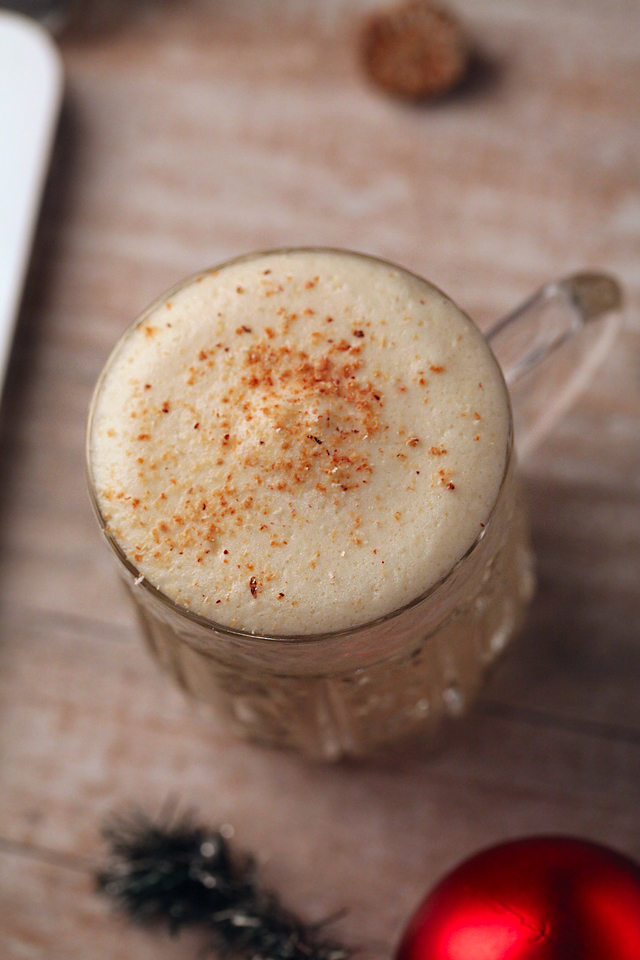
If you succeed in following these directions, you will obtain an absolutely perfect eggnog – thick, fluffy, rich and smooth. And such eggnog has a distinguished smell and taste. A sweet, spicy, creamy, a little boozy, and ultimately a desert drink. Posh and lush desert drink 8) To be honest, this season, it is cooked eggnog that wins my heart (but, in fact, I did not the eggnog aged for three weeks yet, perhaps, something much more interesting is awaiting me next Christmas season. Well, I will have to just wait, a reminder (on next Thanksgiving) has already been set up! :)
P.S. I forget again and again to mention that eggnog can be non-alcoholic :) For this purpose just omit the liquor as you prepare cooked eggnog (actually, you can add booze directly in your glass later, bro ;)

 english
english русский
русский